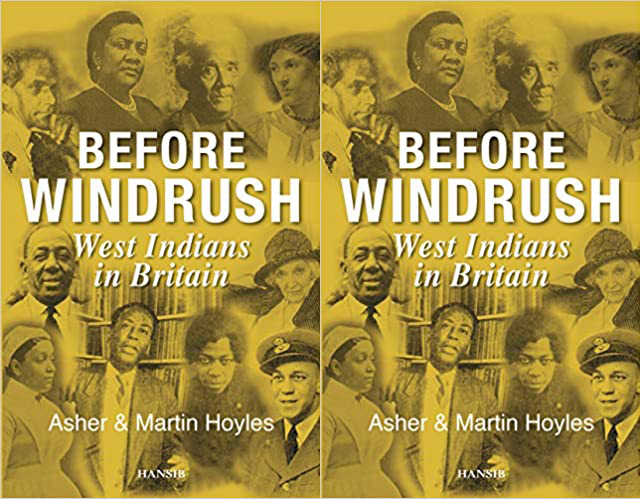Before Windrush: West Indians in Britain
Book review

Before Windrush: West Indians in Britain, Asher and Martin Hoyles, Hansib, 2020, 144p, £9-99. ISBN 978-1-912662-29-6.
This is a very significant book, being highly relevant to the politics and attitudes of our own times.
Asher and Martin Hoyles explore the presence of West Indian people in Britain before the arrival of HMS Windrush in 1948. They emphasise the poignant message that West Indian people had already been present in Britain for over two hundred years before the much-discussed advent of the Windrush. They piece together examples of people, such as Francis Barber who famously worked for Samuel Johnson, and what they experienced within the host culture of these islands.
My sense is that this book fulfils the role of holding up a mirror, not to the West Indian arrivals, but to the host community. It reveals evidence of acceptance and recognition but also of rejection and neglect. It ought to be compulsory reading for people who expect to live properly in a multi-cultural and respectful community because, otherwise, there are risks that we can make assumptions that life for newcomers is perfectly fine when we do not know how they see their own experience. It is too easy to acknowledge the achievements of Learie Constantine in the Lancashire League, where his popularity was enormous, whilst ignoring the fact that he was subject to a colour bar in London. The evidence that one of the most famous cricketers of his time, possibly of all time, experienced double-standards within modern British society is shameful and is a warning about society’s lack of respectful understanding.
Many local and social historians have individually been aware of the historical presence of West Indians within the British community from their researches. Bell’s Life in 1829, for example, records that a sportsman, ‘Morgan the Black’, was involved in a wager over what was known as ‘heaving the lead’ [elementary shot putting] in the vicinity of Boston in Lincolnshire. We have no further knowledge of this person but this fragmentary piece of evidence illustrates that such a person was active at the heart of a local community.
This is not just an historical commentary but it is also interspersed by Asher Hoyles’ highly appropriate poetry. This also is very instructive for anyone seeking to pursue the ‘mirror’ analogy further: it enables us to appreciate how our attitudes are understood by others.

